Applications
Reactivity
Research Area
In Cellular and Molecular Life Sciences : CMLS on 30 July 2025 by Liu, Y., Wang, Z., et al.
-
Biochemistry and Molecular biology
-
Cell Biology
-
Neuroscience
In Protein Science : A Publication of the Protein Society on 1 August 2024 by Mijatovic, E., Ascenção, K., et al.
Homocystinuria (HCU) due to cystathionine beta-synthase (CBS) deficiency is the most common inborn error of sulfur amino acid metabolism. Recent work suggests that missense pathogenic mutations-regardless of their topology-cause instability of the C-terminal regulatory domain, which likely translates into CBS misfolding, impaired assembly, and loss of function. However, it is unknown how instability of the regulatory domain translates into cellular CBS turnover and which degradation pathways are involved in CBS proteostasis. Here, we developed a human HEK293-based cellular model lacking intrinsic CBS and stably overexpressing wild-type (WT) CBS or its 10 most common missense HCU mutants. We found that HCU mutants, except the I278T variant, expressed similarly or better than CBS WT, with some of them showing impaired oligomerization, activity and response to allosteric activator S-adenosylmethionine. Cellular stability of all HCU mutants, except P49L and A114V, was significantly lower than the stability of CBS WT, suggesting their increased degradation. Ubiquitination analysis of CBS WT and two representative CBS mutants (T191M and I278T) showed that proteasomal degradation is the major pathway for CBS disposal, with a minor involvement of lysosomal-autophagic and endoplasmic reticulum-associated degradation (ERAD) pathways for HCU mutants. Proteasomal inhibition significantly increased the half-life and activity of T191M and I278T CBS mutants. Lysosomal and ERAD inhibition had only a minor impact on CBS turnover, but ERAD inhibition rescued the activity of T191M and I278T CBS mutants similarly as proteasomal inhibition. In conclusion, the present study provides new insights into proteostasis of CBS in HCU.
© 2024 The Author(s). Protein Science published by Wiley Periodicals LLC on behalf of The Protein Society.
-
WB
-
Homo sapiens (Human)
Hypoxia-Induced Changes in L-Cysteine Metabolism and Antioxidative Processes in Melanoma Cells.
In Biomolecules on 7 October 2023 by Rydz, L., Wróbel, M., et al.
This study was performed on human primary (WM115) and metastatic (WM266-4) melanoma cell lines developed from the same individual. The expression of proteins involved in L-cysteine metabolism (sulfurtransferases, and cystathionine β-synthase) and antioxidative processes (thioredoxin, thioredoxin reductase-1, glutathione peroxidase, superoxide dismutase 1) as well as the level of sufane sulfur, and cell proliferation under hypoxic conditions were investigated. Hypoxia in WM115 and WM266-4 cells was confirmed by induced expression of carbonic anhydrase IX and 6-phosphofructo-2-kinase/fructose-2,6-biphosphatase 4 by the RT-PCR and Western blot methods. It was shown that, under hypoxic conditions the inhibition of WM115 and WM266-4 melanoma cell proliferation was associated with decreased expression of thioredoxin reductase-1 and cystathionine β-synthase. These two enzymes may be important therapeutic targets in the treatment of melanoma. Interestingly, it was also found that in normoxia the expression and activity of 3-mercaptopyruvate sulfurtransferase in metastatic WM266-4 melanoma cells was significantly higher than in primary melanoma WM115 cells.
-
WB
-
Homo sapiens (Human)
-
Biochemistry and Molecular biology
-
Cancer Research
-
Cell Biology
In Antioxidants (Basel, Switzerland) on 26 June 2023 by Tain, Y. L., Hou, C. Y., et al.
Hydrogen sulfide (H2S) and related reactive sulfur species are implicated in chronic kidney disease (CKD) and hypertension. Offspring born to CKD-afflicted mothers could develop hypertension coinciding with disrupted H2S and nitric oxide (NO) signaling pathways as well as gut microbiota. Thiosulfate, a precursor of H2S and an antioxidant, has shown anti-hypertensive effects. This study aimed to investigate the protective effects of sodium thiosulfate (STS) in a rat model of maternal CKD-induced hypertension. Before mating, CKD was induced through feeding 0.5% adenine chow for 3 weeks. Mother rats were given a vehicle or STS at a dosage of 2 g/kg/day in drinking water throughout gestation and lactation. Perinatal STS treatment protected 12-week-old offspring from maternal CKD-primed hypertension. The beneficial effects of STS could partially be explained by the enhancement of both H2S and NO signaling pathways and alterations in gut microbiota. Not only increasing beneficial microbes but maternal STS treatment also mediates several hypertension-associated intestinal bacteria. In conclusion, perinatal treatment with STS improves maternal CKD-primed offspring hypertension, suggesting that early-life RSS-targeting interventions have potential preventive and therapeutic benefits, awaiting future translational research.
-
WB
-
Rattus norvegicus (Rat)
-
Cardiovascular biology
In Antioxidants (Basel, Switzerland) on 3 April 2023 by Zainol Abidin, Q. H., Ida, T., et al.
Reactive sulfur species, or persulfides and polysulfides, such as cysteine hydropersulfide and glutathione persulfide, are endogenously produced in abundance in both prokaryotes and eukaryotes, including mammals. Various forms of reactive persulfides occur in both low-molecular-weight and protein-bound thiols. The chemical properties and great supply of these molecular species suggest a pivotal role for reactive persulfides/polysulfides in different cellular regulatory processes (e.g., energy metabolism and redox signaling). We demonstrated earlier that cysteinyl-tRNA synthetase (CARS) is a new cysteine persulfide synthase (CPERS) and is responsible for the in vivo production of most reactive persulfides (polysulfides). Some researchers continue to suggest that 3-mercaptopyruvate sulfurtransferase (3-MST), cystathionine β-synthase (CBS), and cystathionine γ-lyase (CSE) may also produce hydrogen sulfide and persulfides that may be generated during the transfer of sulfur from 3-mercaptopyruvate to the cysteine residues of 3-MST or direct synthesis from cysteine by CBS/CSE, respectively. We thus used integrated sulfur metabolome analysis, which we recently developed, with 3-MST knockout (KO) mice and CBS/CSE/3-MST triple-KO mice, to elucidate the possible contribution of 3-MST, CBS, and CSE to the production of reactive persulfides in vivo. We therefore quantified various sulfide metabolites in organs derived from these mutant mice and their wild-type littermates via this sulfur metabolome, which clearly revealed no significant difference between mutant mice and wild-type mice in terms of reactive persulfide production. This result indicates that 3-MST, CBS, and CSE are not major sources of endogenous reactive persulfide production; rather, CARS/CPERS is the principal enzyme that is actually involved in and even primarily responsible for the biosynthesis of reactive persulfides and polysulfides in vivo in mammals.
-
WB
-
Mus musculus (House mouse)
-
Biochemistry and Molecular biology
-
Cell Biology
In Genome Biol on 1 June 2021 by Padmanabhan, N., Kyon, H. K., et al.
Fig.2.C
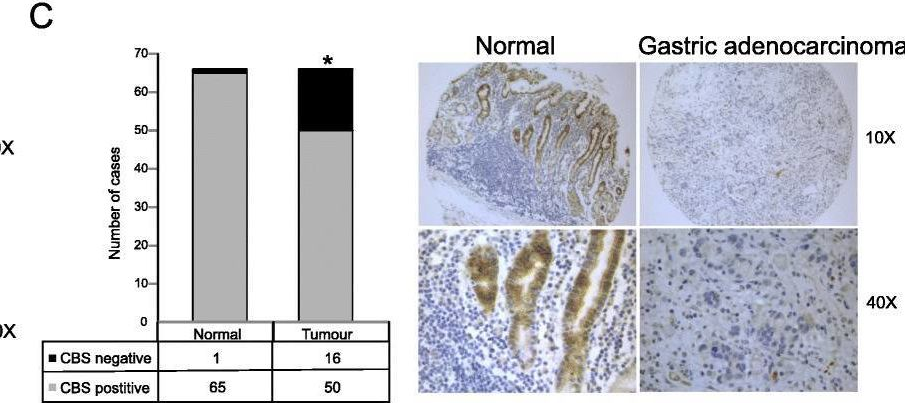
-
IHC
-
Collected and cropped from Genome Biology by CiteAb, provided under a CC-BY license
Image 1 of 5
In Sci Rep on 16 June 2017 by Nandi, S. S. & Mishra, P. K.
Fig.1.B
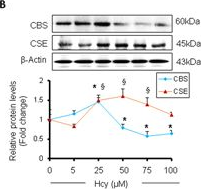
-
WB
-
Mus musculus (House mouse)
Collected and cropped from Scientific Reports by CiteAb, provided under a CC-BY license
Image 1 of 5
In Sci Rep on 16 June 2017 by Nandi, S. S. & Mishra, P. K.
Fig.1.D
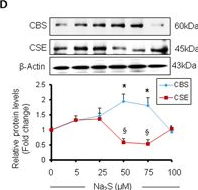
-
WB
-
Mus musculus (House mouse)
Collected and cropped from Scientific Reports by CiteAb, provided under a CC-BY license
Image 1 of 5
In Sci Rep on 16 June 2017 by Nandi, S. S. & Mishra, P. K.
Fig.1.E
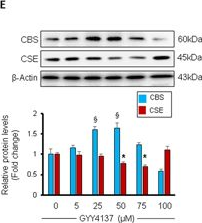
-
WB
-
Mus musculus (House mouse)
Collected and cropped from Scientific Reports by CiteAb, provided under a CC-BY license
Image 1 of 5
In Front Physiol on 24 September 2011 by Streeter, E., Al-Magableh, M., et al.
Fig.1.A
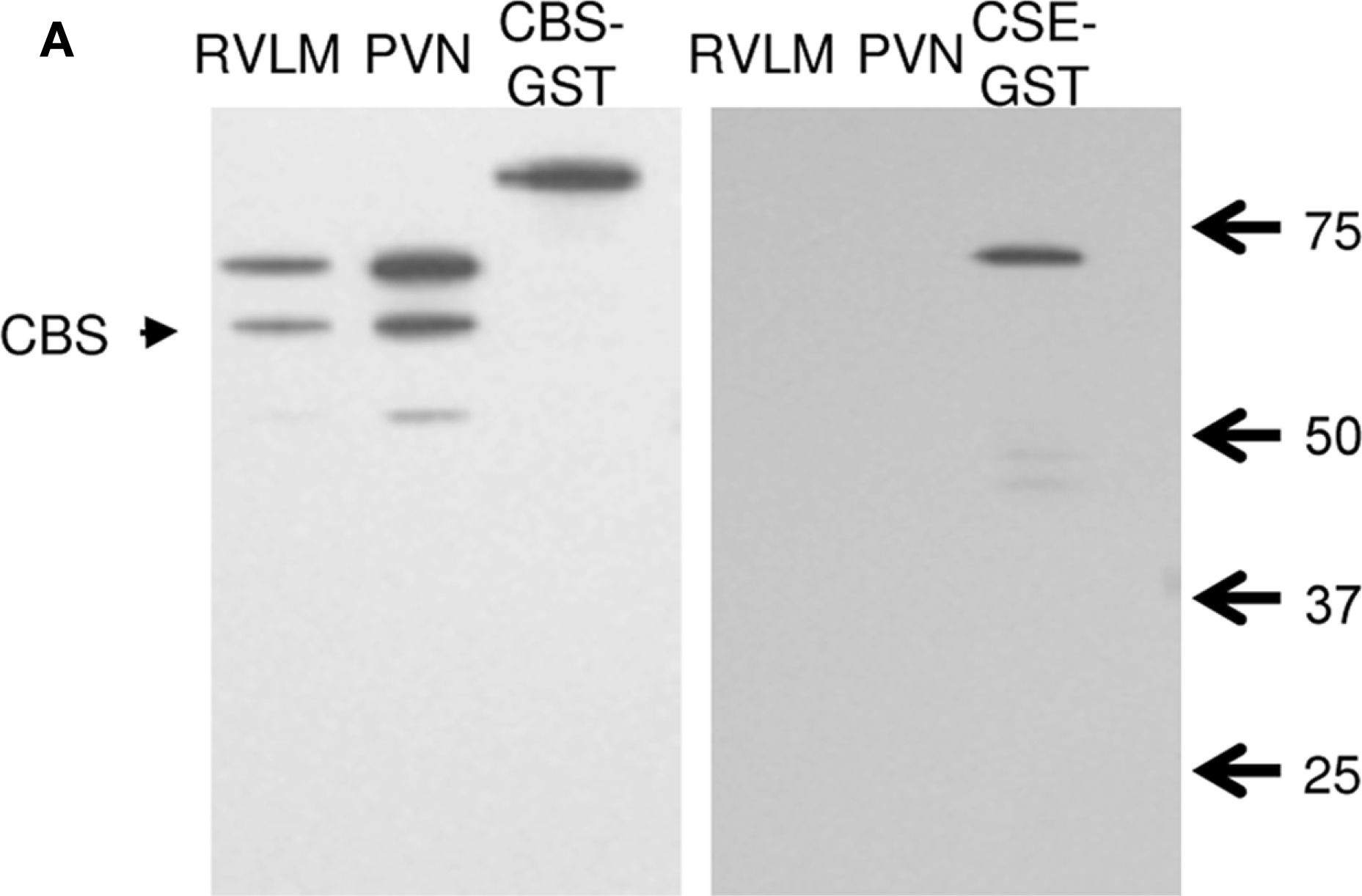
-
WB
-
Rattus norvegicus (Rat)
Collected and cropped from Frontiers in Physiology by CiteAb, provided under a CC-BY license
Image 1 of 5





